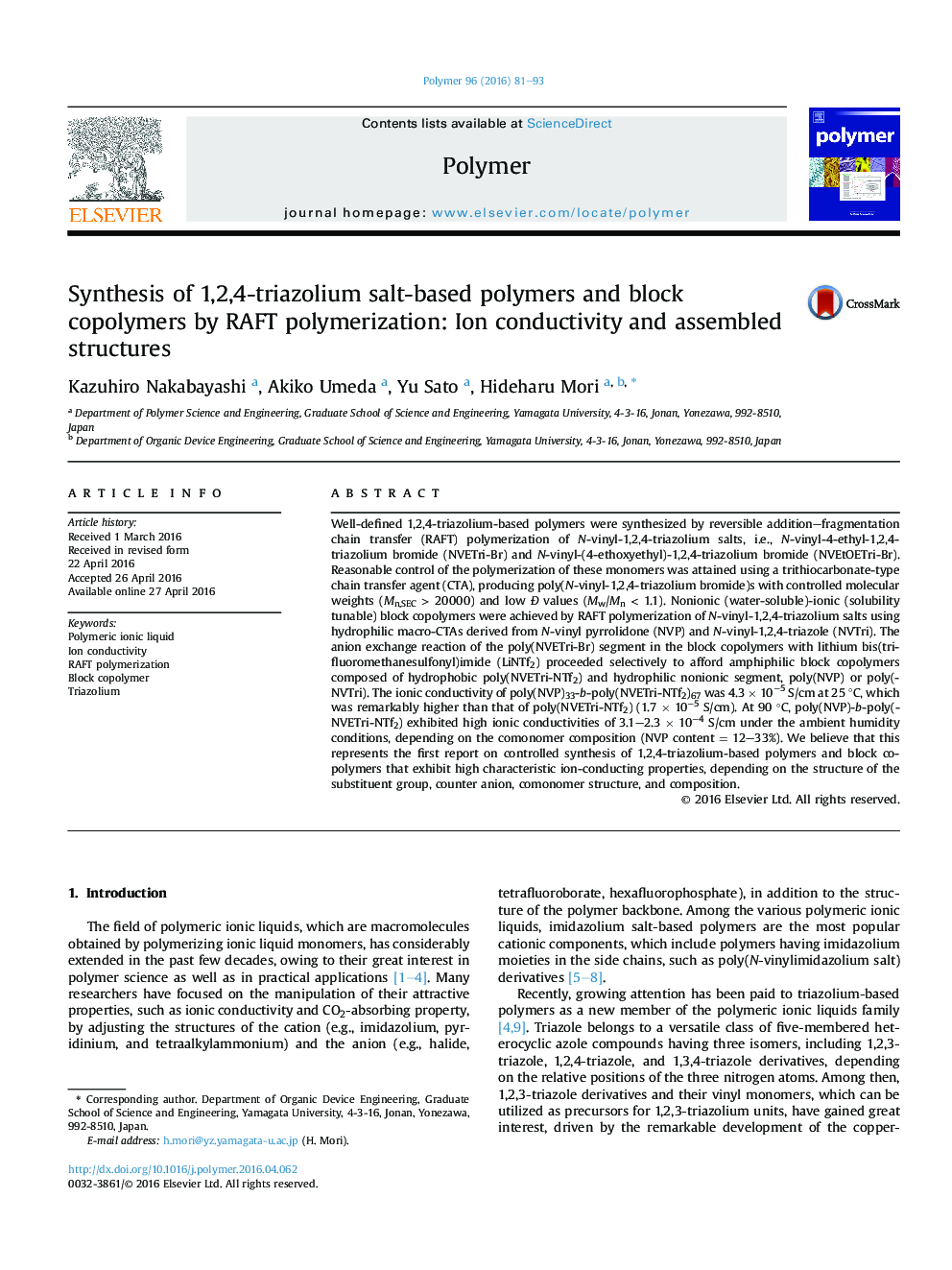| کد مقاله | کد نشریه | سال انتشار | مقاله انگلیسی | نسخه تمام متن |
|---|---|---|---|---|
| 5179195 | 1502510 | 2016 | 13 صفحه PDF | دانلود رایگان |

- This contribution represents the first report of the controlled radical polymerization of N-vinyl-1,2,4-triazolium salts.
- Poly(N-vinyl-1,2,4-triazolium bromide)s with controlled molecular weights and low polydispersities were obtained by RAFT polymerization.
- Nonionic (water-soluble)-ionic (solubility tunable) block copolymers were obtained by RAFT polymerization and anion exchange reaction.
Well-defined 1,2,4-triazolium-based polymers were synthesized by reversible addition-fragmentation chain transfer (RAFT) polymerization of N-vinyl-1,2,4-triazolium salts, i.e., N-vinyl-4-ethyl-1,2,4-triazolium bromide (NVETri-Br) and N-vinyl-(4-ethoxyethyl)-1,2,4-triazolium bromide (NVEtOETri-Br). Reasonable control of the polymerization of these monomers was attained using a trithiocarbonate-type chain transfer agent (CTA), producing poly(N-vinyl-1,2,4-triazolium bromide)s with controlled molecular weights (Mn,SEC > 20000) and low à values (Mw/Mn < 1.1). Nonionic (water-soluble)-ionic (solubility tunable) block copolymers were achieved by RAFT polymerization of N-vinyl-1,2,4-triazolium salts using hydrophilic macro-CTAs derived from N-vinyl pyrrolidone (NVP) and N-vinyl-1,2,4-triazole (NVTri). The anion exchange reaction of the poly(NVETri-Br) segment in the block copolymers with lithium bis(trifluoromethanesulfonyl)imide (LiNTf2) proceeded selectively to afford amphiphilic block copolymers composed of hydrophobic poly(NVETri-NTf2) and hydrophilic nonionic segment, poly(NVP) or poly(NVTri). The ionic conductivity of poly(NVP)33-b-poly(NVETri-NTf2)67 was 4.3 Ã 10â5 S/cm at 25 °C, which was remarkably higher than that of poly(NVETri-NTf2) (1.7 Ã 10â5 S/cm). At 90 °C, poly(NVP)-b-poly(NVETri-NTf2) exhibited high ionic conductivities of 3.1-2.3 Ã 10â4 S/cm under the ambient humidity conditions, depending on the comonomer composition (NVP content = 12-33%). We believe that this represents the first report on controlled synthesis of 1,2,4-triazolium-based polymers and block copolymers that exhibit high characteristic ion-conducting properties, depending on the structure of the substituent group, counter anion, comonomer structure, and composition.
219
Journal: Polymer - Volume 96, 25 July 2016, Pages 81-93